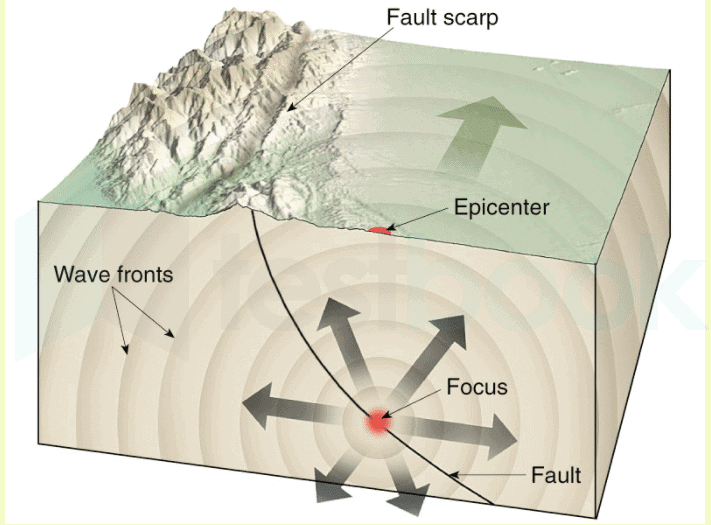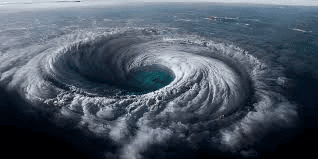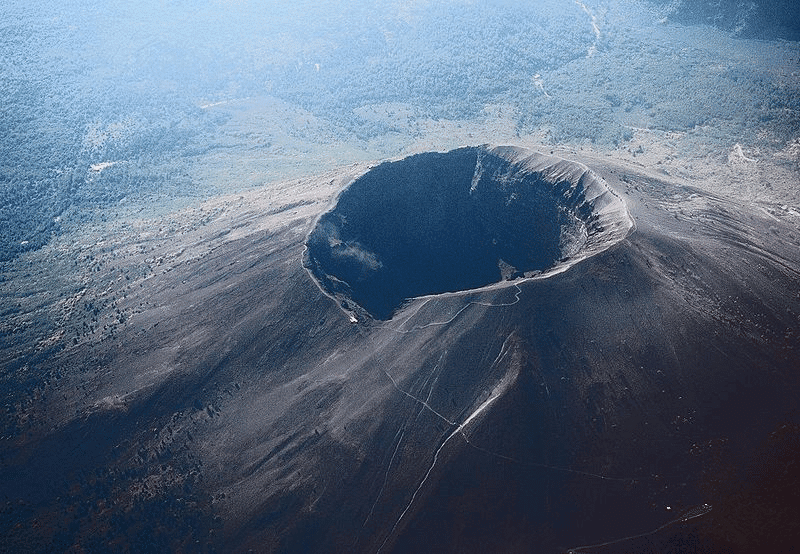Class 5 SST HOTS Questions - Natural Disasters
Multiple Choice Questions (MCQs)
Q1: What is the term for the point directly above the focus of an earthquake?
(a) Seismic zone
(b) Mantle
(c) Epicentre
(d) Crust
Ans: (c) Epicentre
 Epicentre
Epicentre
Q2: Which of the following is NOT a consequence of earthquakes?
(a) Tsunamis
(b) Volcanic eruptions
(c) Loss of life and property
(d) Contamination of water sources
Ans: (d) Contamination of water sources
Q3: What triggers a cyclone?
(a) Rapid cooling of the earth’s surface
(b) Low atmospheric pressure and warm temperatures
(c) High atmospheric pressure and cold temperatures
(d) Sudden terrestrial movement
Answer: (b) Low atmospheric pressure and warm temperatures
 Cyclone
Cyclone
Q4: Which type of volcano may still erupt after being inactive for many years?
(a) Extinct
(b) Dormant
(c) Dead
(d) Active
Ans: (b) Dormant
 Dormant Volcano
Dormant Volcano
Q5: Which natural disaster is specifically associated with the rapid displacement of ocean water?
(a) Drought
(b) Earthquake
(c) Tsunami
(d) Flood
Ans: (c) Tsunami
Fill in the Blanks
1.An ____________ is a natural disaster that occurs due to the sudden movement under the surface of the Earth.
Ans: Earthquake
2. The ____________ scale is used to measure the magnitude of an earthquake.
Ans: Richter
3. A ____________ is caused by warm tropical clouds developing above oceans, leading to heavy rainfall and strong winds.
Ans: Cyclone
4. ____________ is the process of collecting rainwater to use during dry periods.
Ans: Rainwater harvesting
5. The point of origin of an earthquake beneath the earth's surface is known as the ____________.
Ans: Focus
Match the Following

Ans:
(a) - (2) Directly above the earthquake's focus
(b) - (1) Area where a tsunami's effects are the worst
(c) - (4) A long period with no rainfall
(d) - (3) A rotating mass of air
(e) - (5) Molten rock on the Earth's surface
Answer the Following Questions
Q1: What are Seismographs?
Ans: The instrument that is used to study earthquakes are called seismographs.
Q2: What does a Richter scale tell us about earthquakes?
Ans:
- 3 or less on the Richter scale is a weak earthquake.
- Above 3 and below 6 on the Richter scale is a moderate earthquake.
- Above 6 on the Richter scale is a strong and destructive earthquake.
Q3: How can we prevent floods?
Ans:
- High embankments – Prevent floods.
- Trees (afforestation) – To control the speed of the water.
- Check dams – To check the flow of water and prevent floods.
Q4: Which states are prone to cyclones?
Ans: Odisha, Andhra Pradesh, West Bengal, Gujarat, and Maharashtra.
Q5: How can we stay safe from cyclones?
Ans: We can go to a safer place (away from the coastal areas) when there is a warning of cyclones. We can take our animals and belongings with us to a safer place.
Q6: What is a drought?
Ans: Severe shortage of water is called drought. Rivers and ponds dry up. Crops don’t grow due to the shortage of water. Animals also die due to the shortage of water and fodder.
Q7: What is an epidemic?
Ans: When so many people in an area due to diseases. it is called an epidemic.
Q8: What is Seismology?
Ans: The study of earthquakes is called seismology.
Q9: What is a Richter Scale?
Ans: The scale at which the intensity of an earthquake is measured is called the Richter scale.
Q10: Describe the Earthquake that came in 2001 in India?
Ans: On 26 January 2001, A massive earthquake came in the city of Bhuj in Gujarat. It caused so much destruction. About 20,000 people lost their lives.
Q11: What are aftershocks?
Ans: Smaller shocks shake the ground repeatedly even after several days after the earthquake. These small shocks are called aftershocks.
Q12: What are tidal waves?
Ans: The high waves caused by very strong winds and heavy rains are called tidal waves.
Q13: Which states are frequently affected by floods?
Ans: Utter Pradesh, Bihar, West Bengal, Assam.
Q14: What are check dams?
Ans: Check dam is a small and temporary dam constructed in the flow of water to prevent floods.
Q15: What is a famine?
Ans: When people die due to a shortage of food, it is called famine.
|
33 videos|264 docs|50 tests
|
FAQs on Class 5 SST HOTS Questions - Natural Disasters
| 1. What are the different types of natural disasters? |  |
| 2. How can we prepare for a natural disaster? |  |
| 3. What should I do during an earthquake? |  |
| 4. How do natural disasters affect the environment? |  |
| 5. What are the signs of an impending natural disaster? |  |
















